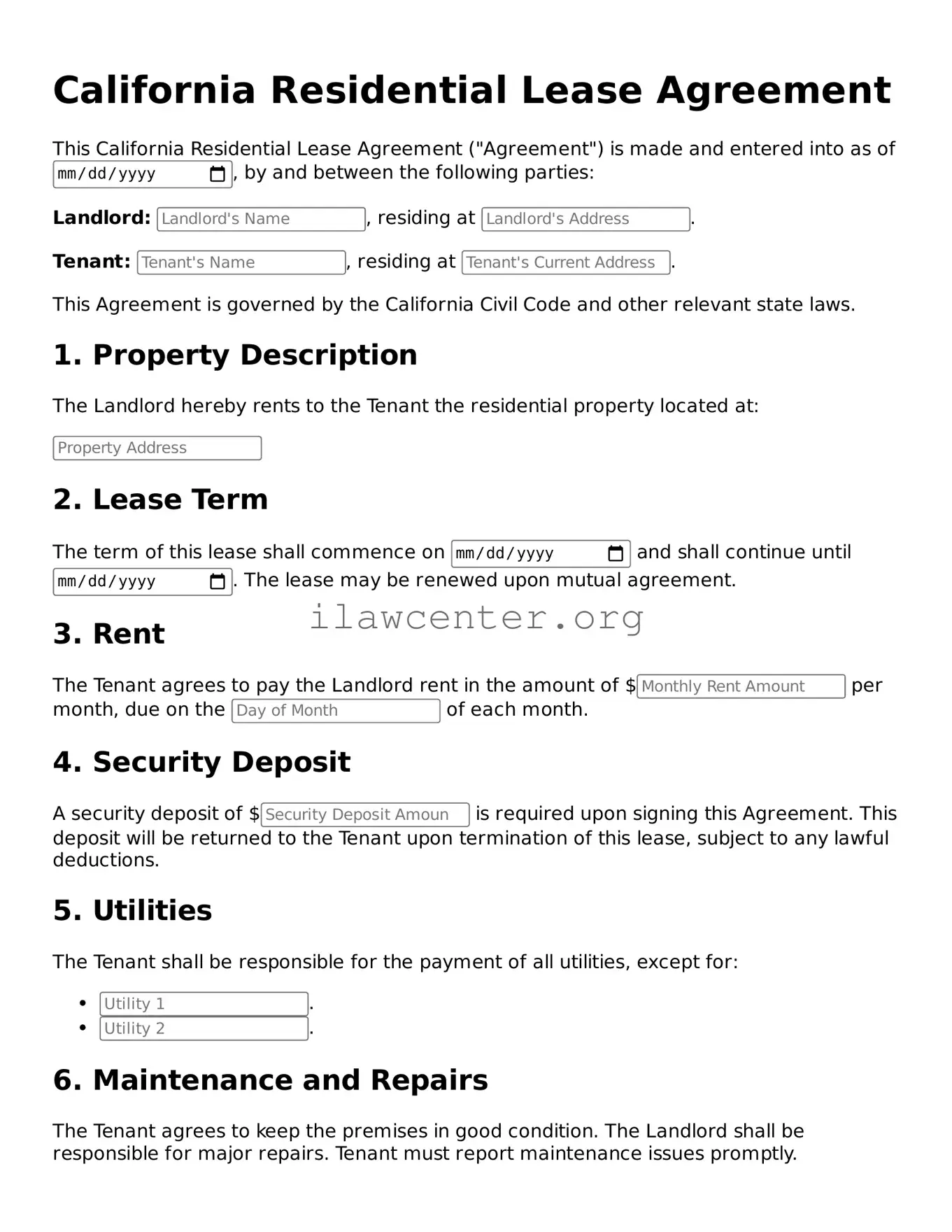What is a California Residential Lease Agreement?
The California Residential Lease Agreement is a legally binding document used by landlords and tenants in California. It outlines the terms and conditions under which a tenant may occupy a rental property. This form covers important aspects such as rent payment, lease duration, security deposits, maintenance responsibilities, and other essential rules governing the tenancy. It is crucial for both parties to understand the terms to avoid disputes and ensure a smooth rental experience.
What are the key components of this lease agreement?
Key components of the California Residential Lease Agreement include the names of the parties involved, the rental property's address, the term of the lease, the monthly rent amount, and procedures for payment. Additionally, it outlines details about the security deposit, maintenance obligations, and restrictions on property use. There may also be clauses regarding pets, smoking, and modifications to the premises. Each section is designed to clarify responsibilities and protect the rights of both the landlord and tenant.
Is it mandatory for landlords to use a written lease?
While not mandated by law, having a written lease is highly recommended for landlords. A written lease provides clear evidence of the terms agreed upon, which can protect both parties in case of disputes. In California, if a lease is verbal and lasts for more than one year, it must be put in writing to be enforceable. However, written agreements are advisable for any duration to solidify expectations and responsibilities for all involved.
How much can a landlord charge for a security deposit?
In California, the maximum amount a landlord can charge for a security deposit varies based on the type of rental agreement. For unfurnished residential properties, the limit is usually up to two months' rent. For furnished properties, this limit increases to three months' rent. It's essential that the lease agreement specifies the security deposit amount and the conditions under which it may be withheld after the lease ends.
What happens if the tenant wants to break the lease early?
If a tenant wishes to break the lease before its term expires, they should first review the lease agreement for any stipulations regarding early termination. Many leases include specific penalties or lease-breaking fees. California law allows tenants to break a lease without penalty in specific situations, such as domestic violence, uninhabitable living conditions, or military service. It is always advisable for tenants to communicate openly with their landlord to discuss possible options should they need to leave the property early.
Can a landlord enter the rented premises without notice?
Under California law, landlords cannot enter a rental unit without proper notice, except in emergencies. Typically, landlords must provide at least 24 hours' written notice before entering for repairs or inspections. This provision is established to respect the tenant's right to privacy while also allowing landlords to fulfill their responsibilities. If landlords do not adhere to this rule, tenants can raise concerns and potentially take appropriate action to protect their rights.
What should a tenant do if the landlord fails to maintain the property?
If a landlord neglects maintenance duties, the tenant should first document the issues by taking photos or keeping a written record. They should then notify the landlord, preferably in writing, detailing the maintenance issues and requesting repairs. If the landlord still does not respond, tenants have several options. They may be able to request repairs formally, pay for repairs and deduct that cost from the rent, or, in severe cases, seek legal assistance. Always be sure to follow the procedures outlined in the lease and state law to protect one’s rights and avoid potential repercussions.
